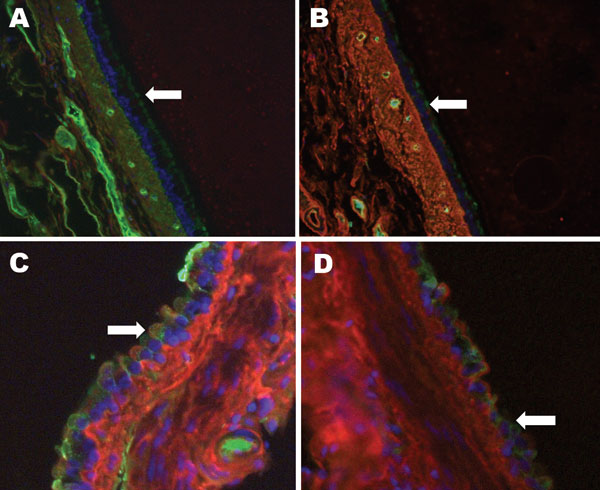Influenza Infection in Wild Raccoons
Jeffrey S. Hall
1
, Kevin T. Bentler, Gabrielle Landolt, Stacey A. Elmore, Richard B. Minnis, Tyler A. Campbell, Scott C. Barras, J. Jeffrey Root, John Pilon, Kristy Pabilonia, Cindy Driscoll, Dennis Slate, Heather Sullivan, and Robert G. McLean
Author affiliations: US Department of Agriculture National Wildlife Research Center, Fort Collins, Colorado, USA (J.S. Hall, K.T. Bentler, S.A. Elmore, J.J. Root, J. Pilon, H. Sullivan, R.G. McLean); Colorado State University College of Veterinary Medicine and Biomedical Sciences, Fort Collins (G. Landolt, K. Pabilonia); Mississippi State University, Starkville, Mississippi, USA (R.B. Minnis); US Department of Agriculture National Wildlife Research Center, Kingsville, Texas, USA (T.A. Campbell); US Department of Agriculture Wildlife Services, Moreley, Virginia, USA (S.C. Barras); Maryland Department of Natural Resources, Oxford, Maryland, USA (C. Driscoll); US Department of Agriculture Wildlife Services, Concord, New Hampshire, USA (D. Slate)
Main Article
Figure

Figure. Raccoon respiratory tissues stained with lectins specific for sialic acids (SAs) with α2,6- and α2,3-linkages. A) Upper trachea; B) lower trachea; C) bronchus; D) bronchiole. Arrows indicate endothelial lining of the tissues indicated. Green staining shows a reaction with fluorescein isothiocyanate–labeled Sambucus nigra lectin, which indicates SAs linked to galactose by an α2,6-linkage (SAα2,6Gal). Red staining shows a reaction with biotinylated Maackia amurensis lectin (detected with Alexa Fluor 594–conjugated streptavidin), which indicates an SAα2,3Gal linkage. Tissues were counterstained with 4,6,-diamidino-2-phenylindole dihydrochloride. Original magnification ×40 in panels A, B, and D and ×100 in panel C.
Main Article
Page created: July 22, 2010
Page updated: July 22, 2010
Page reviewed: July 22, 2010
The conclusions, findings, and opinions expressed by authors contributing to this journal do not necessarily reflect the official position of the U.S. Department of Health and Human Services, the Public Health Service, the Centers for Disease Control and Prevention, or the authors' affiliated institutions. Use of trade names is for identification only and does not imply endorsement by any of the groups named above.
